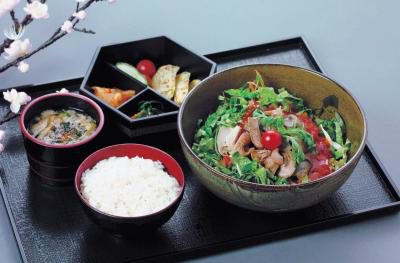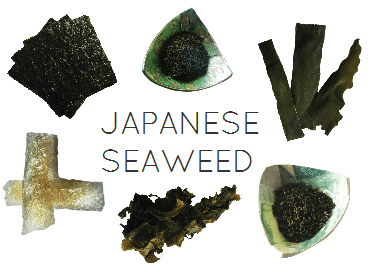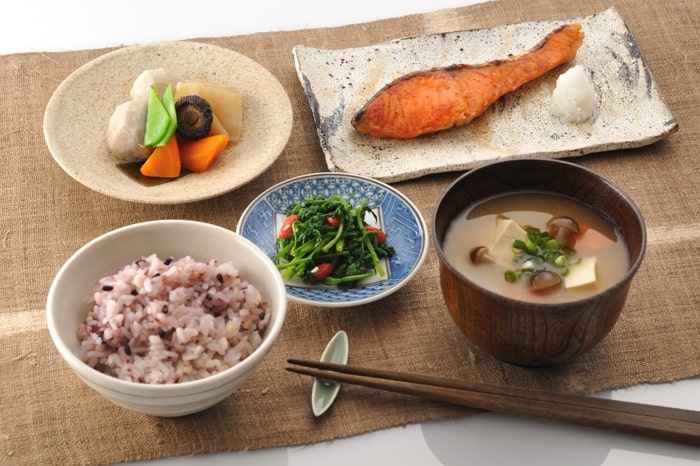Japanese women live up to an impressive 87 years — way beyond the global average of 68 years!
Many of you would know that Japan enjoys the highest life expectancy in the world, with Japanese women living up to an impressive 87 years — way beyond the global average of 68 years. From dietary practices to sitting postures, there’s so much to learn from the Japanese. In this article, we’ll be uncovering the secrets of the Japanese way of life, by looking at 5 habits of the Japanese people that we can incorporate into our daily lives.
Shinrin-Yoku (Forest Bathing)
If you’ve visited the land of the rising sun, you would’ve heard of ‘shinrin-yoku”, the practice of “forest bathing”. Since the 1980s, forest bathing has been promoted as a form of therapy – akin to the appreciation of nature like picnicking under blooming cherry blossoms. While we wait for a return of the cherry blossom showcase next year, we can engage in forest bathing at the many green spaces all over the island.
Being in the presence of trees has scientifically been proven to improve one’s physical and mental health. Various studies have shown that forest bathing helps to lower one’s heart rate and blood pressure, reduce stress hormone production, boost the immune system, and improve the overall feelings of wellbeing. Inhaling phytoncide, which are essential oils emitted from wood and plants, has been found to improve immune system function.
So on your next day off, immerse yourself in these therapeutic landscapes all around Singapore and get a well-needed dose of nature.
The Japanese Diet
With the No. 1 lowest obesity rate in the world, it’s time to take a good look at the traditional Japanese diet, which is known as one of the healthiest in the world. And rightly so, since it is based on a large variety of fruit, vegetables, tofu and fish.
The Japanese also love seaweed like protein-rich nori and kombu, which contains vitamins A and C. Another type of seaweed is wakame, which is high in iron and calcium. In fact, wakame contains 10 times more calcium that the amount found in milk!
Japanese favourites like salmon, fresh tuna, mackerel and herring are mostly fatty fish containing vitamin D, omega 3 fatty acids and potassium. Despite making up 2% of the world’s population, the Japanese consume 10% of the world’s fish. Consuming more fish allows the Japanese to eat less red meat, which contains artery-clogging saturated fat that can lead to a plethora of health conditions when consumed excessively.
Apart from the healthy diet of the Japanese, they also serve smaller portions and eat mindfully and slowly, instead of wolfing their meals down. When we use smaller plates and focus on eating, we’ll be more aware of when we feel full and prevent overeating.
Ready to switch up your diet? Here are a couple of Japanese recipes that you should try out!
Sitting Seiza
People who are less flexible might struggle with sitting seiza, the formal sitting posture in Japan. In Japanese, “za” refers to sitting, and “sei” is the correct posture. Requiring neatly-folded legs and an erect spine with feet tucked under the body, sitting seiza is no easy feat.
This posture helps to calm the heart, focus the spirit and even has positive effects on one’s health. In fact, sitting seiza helps to train core muscles in the abdominal region and back, fixes a slouching posture and even relieves lower back pain and stiff shoulders. Some people believe that it improves circulation across the body, promotes wakefulness and increases concentration as well.
Instead of the usual body massage, opt for sitting seiza the next time your body aches!
Hot Springs
What is a trip to Japan without visiting an onsen, right? While the healing properties of hot springs have yet to be scientifically confirmed, many people swear by the therapeutic benefits they have enjoyed from soaking in the onsens.
According to folklore, soaking in hot springs increases one’s blood flow, improves circulation and metabolism, as well as the absorption of essential minerals. While we wait for more scientific findings on balneology (the treatment of disease by bathing), we’ll still visit the onsens in Japan in full confidence that the lowered levels of anxiety and stress will create rippling psychological benefits for us, even if we are uncertain of the physical advantages.
By the way, Singapore has its own hot spring as well, so you can enjoy the experience without travelling to Japan!
Sleeping On A Futon
Sleeping on a Japanese futon may take some getting used to, but with the numerous health benefits associated with it, we should give it a shot. Unlike a soft mattress, the futon prevent the sagging of joints, which can contribute to backache or a cricked neck.
Placed on a slatted wooden base, the the mattress of a futon allows greater air circulation, helping to reduce perspiration during the night and lowering the amount of dust mites in the mattress.
Putting away the stereotypical hard mattresses of Japan, futons have softer versions that you could learn to love, as you enjoy a better quality of sleep every night.
With new insight into the Japanese way of life, perhaps we can adopt a couple of habits into our own lives.






















